Crackling Effect on Old Tenmoku
Some Tenmoku often have a crackling effect similar to that of old Song Dynasty Tenmoku and Ge kiln, Ru kiln. However, the crackling effect on Tenmoku is different from that of Ge kiln and Ru kiln, where the crackles are presented in a more regular pattern, which may give the impression of cracks or defects. Price of Pei Chunyuan's Tenmoku.
Next, let's talk about the issue of crackling effect on Tenmoku, and please feel free to share any related and easy-to-understand expressions in the comments section.
In terms of aesthetics, if the crackling effect on Tenmoku can be presented in a regular network pattern similar to that of Ge kiln and Ru kiln, it can be very beautiful. As can be seen from the crackling effect on this old Tenmoku in the picture below, the network pattern of cracks has an overall aesthetic tension.
The crackling effect on old Tenmoku can also have an even more beautiful effect with an overall crackling pattern.
Crackling effect on new Tenmoku.
From the appearance point of view.
At the moment when Tenmoku is taken out of the kiln, there will be a short period of "sizzling" crackling sound, and there is no crackling effect before it is taken out of the kiln. However, the crackling effect may suddenly appear at the moment it is taken out of the kiln. To prove this, the author went to observe the firing process in the studio for a period of time.
Thanks to Master Chen Huimin's support, two Tenmoku were taken out of the kiln at the high temperature of 800 degrees and were scrapped due to rapid heating and cooling.
From the perspective of materials science, the probability of crackling effect on vitrified Tenmoku is relatively high. As the name suggests, vitrified glaze has a surface layer similar to glass, and the vitrification effect on the glaze surface is like a mirror. When the glaze surface expands to a certain limit and reaches the critical point, it is easily affected by external temperature and will crack. This kind of crackling effect can be simply summarized as the "thermal expansion and contraction" effect.
From the perspective of raw materials.
As we all know, the raw materials for Tenmoku mainly consist of red clay, sticky clay, high-temperature clay, glaze ore, and plant ash. There is a big problem with the raw materials, which is their instability. Unlike a strictly controlled proportion in a systematic ratio, the raw materials cannot be strictly controlled in their proportion, which is one of the factors that lead to the instability, irregularity, and unpredictability of crackling effect on Tenmoku. However, on the other hand, if the raw material ratio is strictly controlled, Tenmoku will lose its beauty, mystery, and uncertainty in terms of quantification, scale, and enjoyment of playing with Tenmoku. Don't you agree?
From the perspective of production process.
In my personal opinion, the process of kneading the clay and aging the clay is a major factor. Pure manual grinding, pounding, and kneading of the clay are almost impossible in terms of time and cost for firing Tenmoku. Manual grinding, pounding, and kneading have little impact on the structure of the clay in terms of speed and efficiency, and its compactness and air permeability are better than those of mechanized methods. However, there are also issues with the uncertainty of manual methods and the uncertainty of raw materials. There are no rules to follow in determining the optimal speed and results of kneading the clay.
From the perspective of kiln firing and kiln atmosphere.
As we all know, the most critical aspects of Tenmoku firing are temperature control, heating curve, reduction degree, reduction time, and kiln atmosphere control during the firing process. Just imagine, at a temperature of 1300 degrees, technological advances have not yet reached the point where we can control such an environment.
Another factor is that Tenmoku firing is not a continuous rise in temperature from 0 degrees to around 1300 degrees. During the process of temperature rise and fall, there will be changes in the environment, and the changes in kiln atmosphere and temperature directly test the ability of the clay and glaze of Tenmoku to withstand these changes. This is also the reason for the instability of the raw materials mentioned earlier.
From the perspectives of the north-south environment and tea tasting usage.
In some seasons, there is a large temperature difference between the north and south. Based on current results, Tenmoku firing at Tenmoku House in Jianyang has resulted in some Tenmoku cups that were sold locally but shipped to Beijing, Xinjiang, and other places showing some degree of cracking due to weather impacts. Tenmoku is a tea vessel that can withstand the high temperature of tea water, but some may ask why it cannot withstand even 100 degrees if it can withstand 1300 degrees.
Now let me explain in detail. One possibility is that the firing process has already expanded the glaze surface to the critical point, and with a little external influence, cracking occurs naturally. Another possibility is the effect of rapid cooling or heating.
There is a fundamental difference between "opening" and "cracking".
What we have discussed above is basically glaze cracking or, more precisely, surface cracks in the glaze. This does not involve overall cracks in the glaze layer or cracks that extend into the body, and there is a fundamental difference between the two.
After all this discussion, is opening considered good or bad? And what about the prices of Pei Chunyuan's Tenmoku?
The above analysis of the factors leading to opening is based on actual situations and is an objective reality. We are not trying to excuse the issue of Tenmoku opening, nor do we need to. In the world of porcelain, opening is a normal phenomenon, and many friends have questions about it. The principle is to seek the root and speak the truth with facts. The philosophy theory that something that cannot be changed is reasonable, and the reason for existence is that it exists.
As for the prices of Pei Chunyuan's Tenmoku, it depends on various factors such as the quality and rarity of the Tenmoku, the reputation and skill of the artist, and the market demand. Prices can range from a few hundred to tens of thousands of dollars.
How should we view this issue?
In terms of personal aesthetic standards, if you pay particular attention to details and cannot tolerate opening, then I suggest that you should not consider Tenmoku with a high probability of opening. However, Tenmoku can be seen as a kind of imperfect beauty, a beauty with regrets. While perfectly flawless Tenmoku exists, they are extremely rare. If you pursue this kind of ultimate perfection, I suggest that you consider aesthetic considerations of the vessel's form.
In fact, Tenmoku opening is no different from other porcelain. Therefore, there is no problem, and it is not considered a defective product. It is a natural result of traditional craftsmanship, and respecting nature may be the most open-minded attitude. Appreciating Tenmoku is about cultivating an open and inclusive mindset, which is the true process of enjoyment. What do you think?
Next, let me conclude today's sharing with an explanation from Baidu Baike about the opening issue.
Conclusion.
Opening is a natural cracking phenomenon of the glaze surface of porcelain. There are two reasons for cracking: first, the clay extends in a certain direction during molding, which affects the arrangement of molecules; second, the clay and glaze have different expansion coefficients, and the glaze layer contracts greatly during cooling after firing. Therefore, cracking was originally a drawback in porcelain firing. However, people have mastered the law of cracking and created "opening glaze" (i.e. crackle glaze), which has become a special decoration of porcelain. Ru, Guan, and Ge kilns in the Song Dynasty all produced such products. Opening is also called ice crackle, with colors such as eel blood, golden thread iron wire, and light yellow caviar pattern, and shapes such as net pattern, plum blossom pattern, and fine crackle pattern, etc.


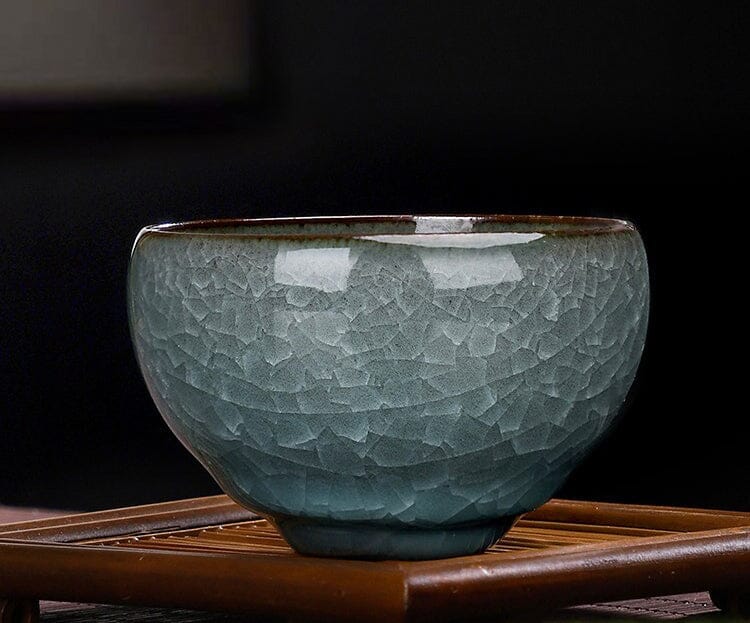
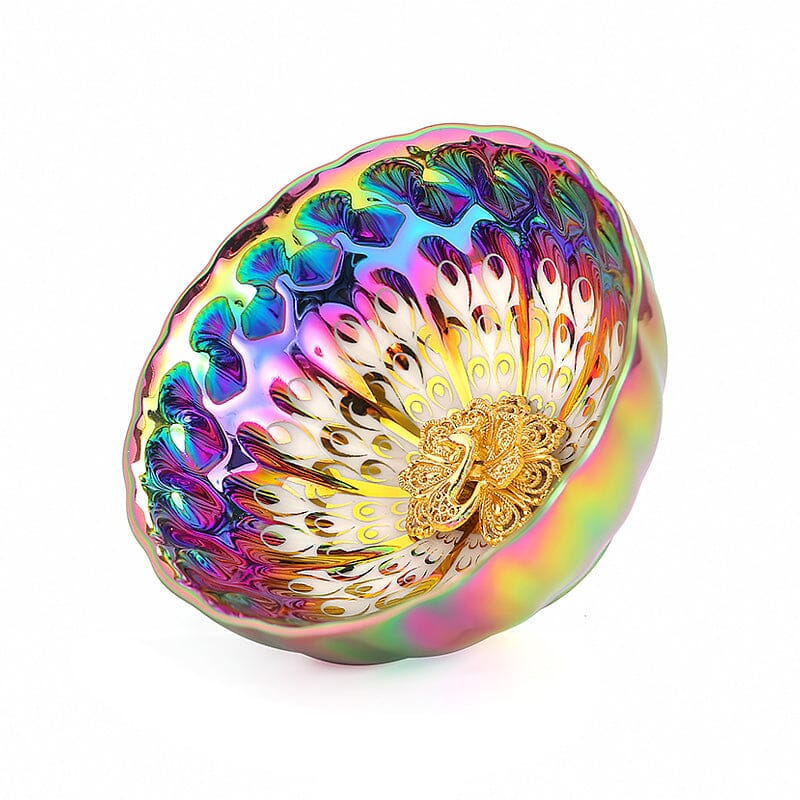
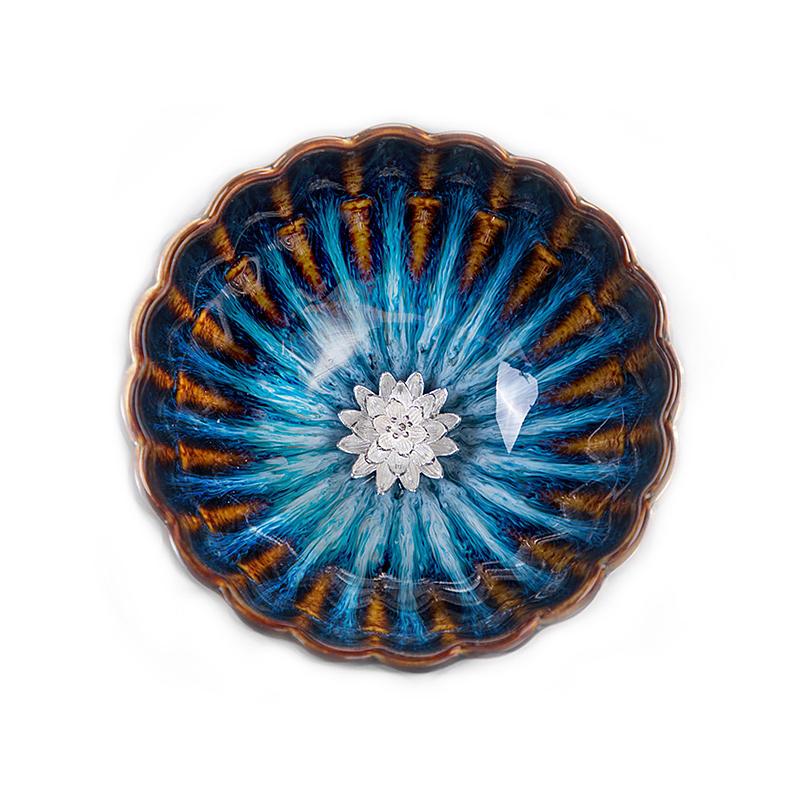
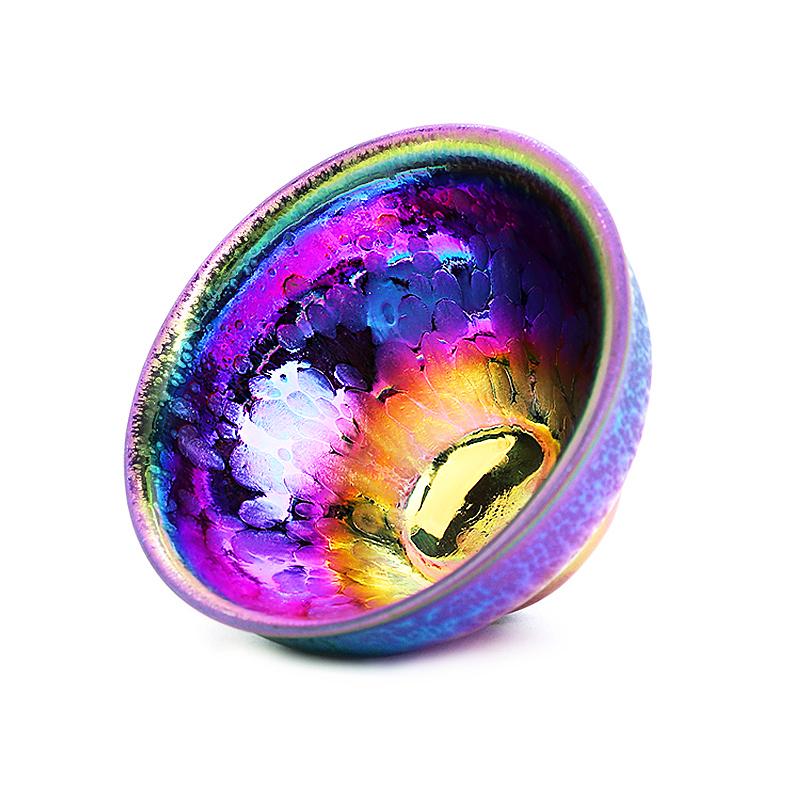
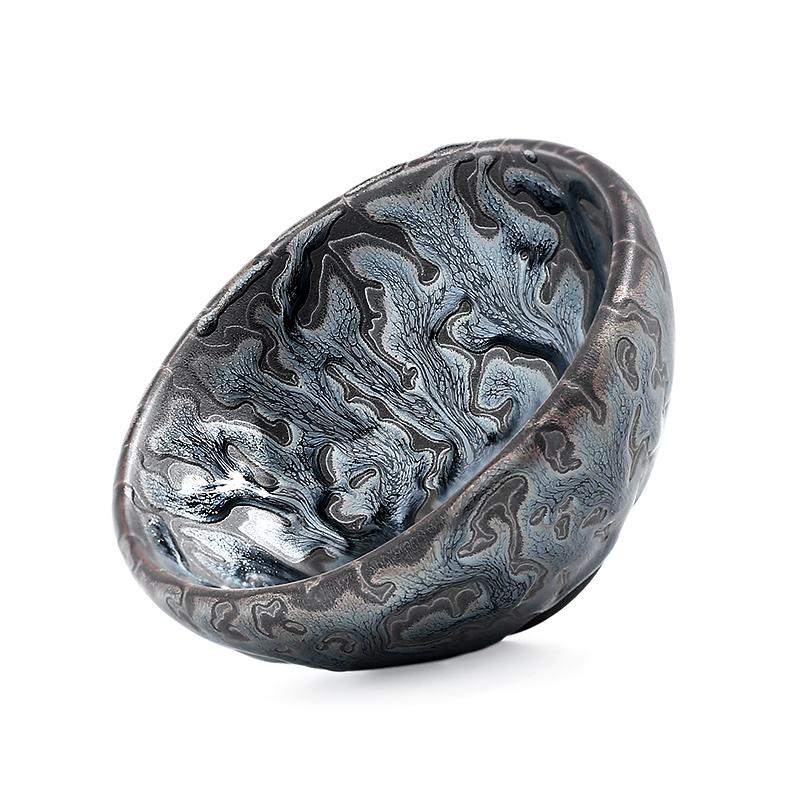
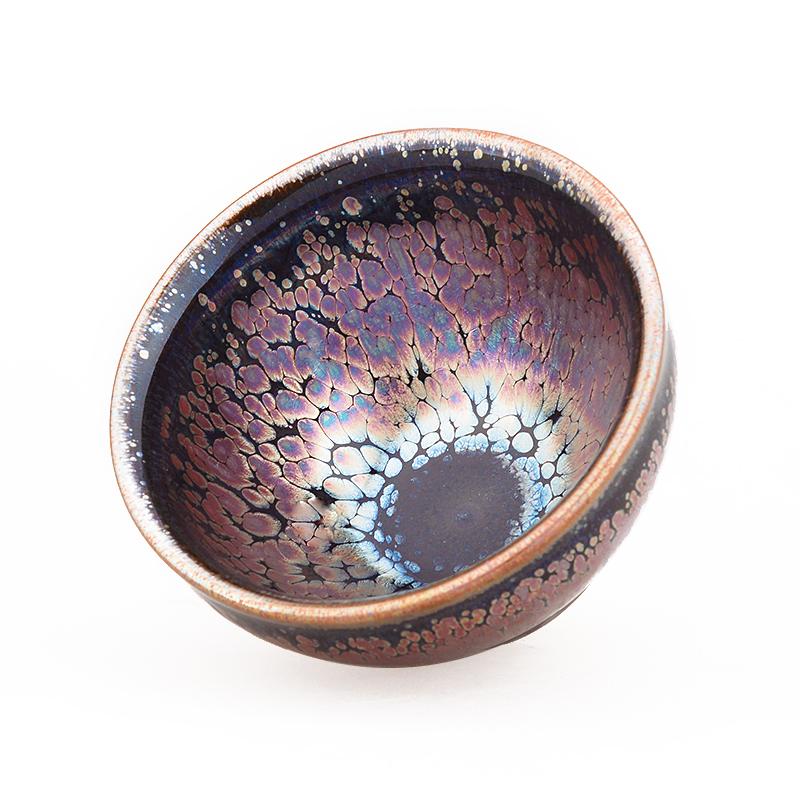
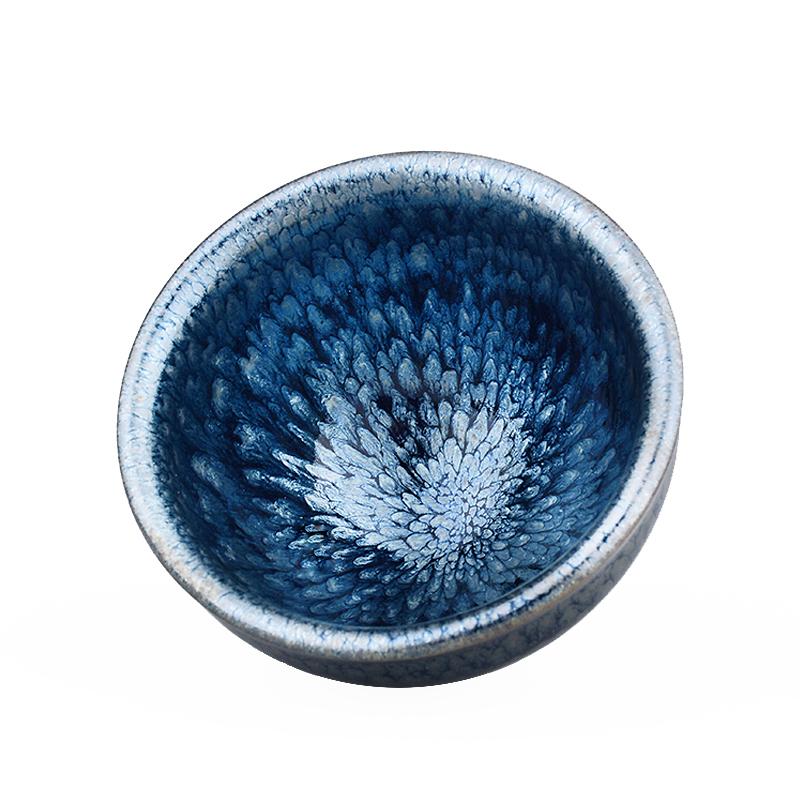
Share:
Why is the Silver Rabbit hair so rare?
Classification of the depth of glaze color for Tenmoku